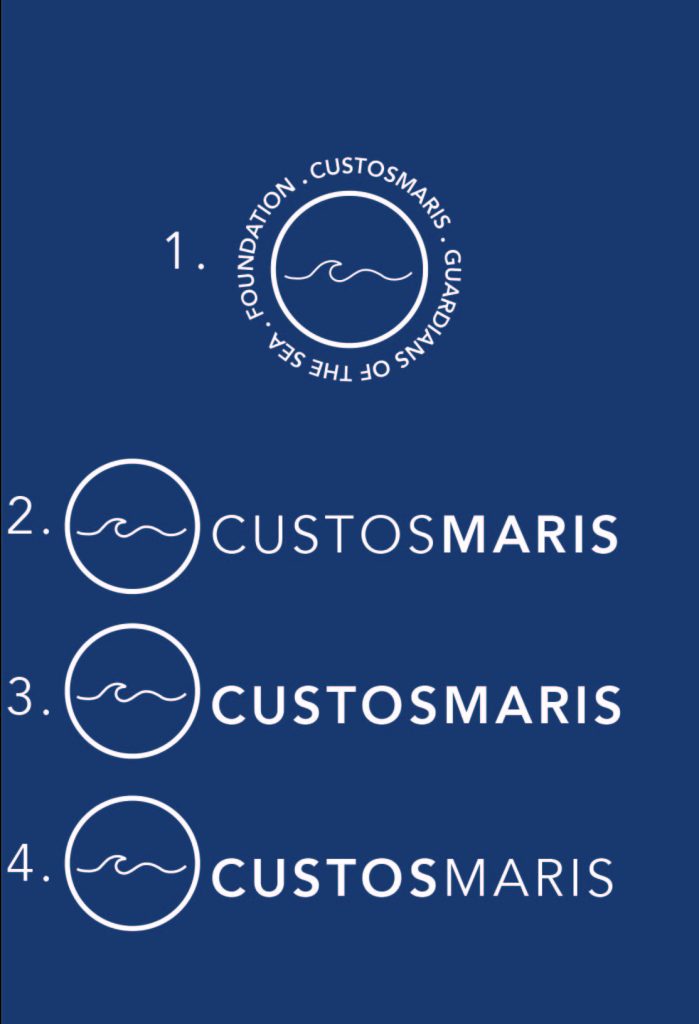1.1 Create a fictitious client
Plastic pollution has a major impact on our marine life. Your job is to create a fictitious, non-profit foundation that raises awareness around this.
Foundation name:
Custos Maris.
Custos Maris means “Guardian of the Sea” in Latin.
Byline:
Guardian of the Sea.
Business concept:
Custos Maris is a non-profit foundation. Their mission is to create awareness and educate people about how plastic pollution is destroying our oceans. Threatening our ocean health, how it contributes to climate change, and the endangerment of our marine life as we know it. Solutions on how to reduce your plastic footprint.
Profile:
Their mission is to educate people about how plastic pollution is destroying our oceans and the impact it has on our environmental health and marine life. Helping people to sustainable solutions on how to end plastic pollution to save our oceans. Join the movement now!
Vision:
Bringing people together, helping them with sustainable solutions on how to end plastic pollution. Solutions on how you can reduce your plastic footprint to save our oceans.
Audience:
Their target audience is young adults, people who are passionate about plastic pollution and the ocean, and content creators that want to make a change.
CUSTOS MARIS LOGO OPTIONS

1.2 Create your own brief
Using yourself as the fictitious client you created in Lesson Task 1.1, create a briefing document that asks and answers the key questions listed below. Note that these questions are a guide, and you can add more if you feel the need.
Your brief should cover these key areas:
- What is your client’s name?
- What is your client’s service/product/offering?
- Who is the target audience for the website?
- Who are their competitor brands? You would have saved some website reference links in Lesson Task 1.
- What is the goal/business objective for the website?
- How are you going to achieve this goal/objective?
- What is the preferred design style? Are there colour preferences etc.?
- What is the ‘tone’ of the website? (serious, business/formal, fun, friendly, neutral etc.)
- How many pages will the site have, and what will the page titles be? (i.e. home, about us, the team etc.)
- Sketch a draft website architecture (so you can see where your pages and sections will go)
- What are your suggestions for marketing the site?
The brief should be comprehensive and detailed enough to hand over to any design/programming team and get optimal results.
The Brief
What is your client’s name?
Custos Maris
What is your client’s service/product/offering?
Information about plastic pollution and its consequences to the ocean and our climate. Solutions on how to reduce your plastic footprint.
Who is the target audience for the website?
Their target audience is young adults that want to learn more about plastic pollution and to help end it. Content creators that want to make a change.
Who are their competitor brands? You would have saved some website reference links in Lesson Task 1.
https://www.initiativesoceanes.org/, https://theoceancleanup.com/, https://www.plasticpollutioncoalition.org/, https://oceana.org/ ,https://www.parley.tv/#fortheoceans.
What is the goal/business objective for the website?
Educating people on the serious consequences plastic pollution has on the ocean and the environment. For people to take action against plastic waste and to help them replace plastic waste with a sustainable alternative. To help end plastic pollution. Bringing people together to help them with sustainable solutions to plastic pollution.
How are you going to achieve this goal/objective?
By having a strong and informative web page. Infographics and pictures with strong headlines and short informative text to capture them. I want visitors to feel that they need to take action against plastic pollution.
What is the preferred design style? Are there color preferences etc.?
The design should be minimalist and clean with meaningful and memorable infographics and pictures, strong headlines, and short informative text. The colors will be black, white, and different shades of blue.
What is the ‘tone’ of the website? (serious, business/formal, fun, friendly, neutral, etc.)
The tone of the website should be serious, informative, and captivating.
How many pages will the site have, and what will the page titles be? (i.e. home, about us, the team, etc.)
One page, with several sections.
Home, Mission, Ocean Facts, Take action, Contact
What are your suggestions for marketing the site?
Social media platforms such as Facebook, Instagram, Twitter. Reaching out to content creators that are passionate about ocean pollution and the environment that have a large number of followers that can help spread the message. Articles and blog posts. Engaging people to help spread the message. Maybe sell some t-shirts or a cap with the logo to get people talking about it.
Sketch a draft website architecture (so you can see where your pages and sections will go)

1.3 Draft your own website architecture and wireframes
Here is a sketch of my one-page website wireframe structure:

1.3 Provide your own hosting service
My domain host will be the same one I used in GRA 1.
byericadesign.com (one.com).
1.4 Create your own website prototype
Now that you have your client, client brief, and site’s architecture and wireframes in place, you have a clear view of your website’s overall framework and page layouts, and you can get started with designing.
Move over to Figma to start designing and prototyping your website.
Here is my first attempt to build a prototype in Figma:
https://www.figma.com/file/ds8RvJVRV1pJIKDcDTuQ2M/Untitled?node-id=3%3A3
Hope you like it!